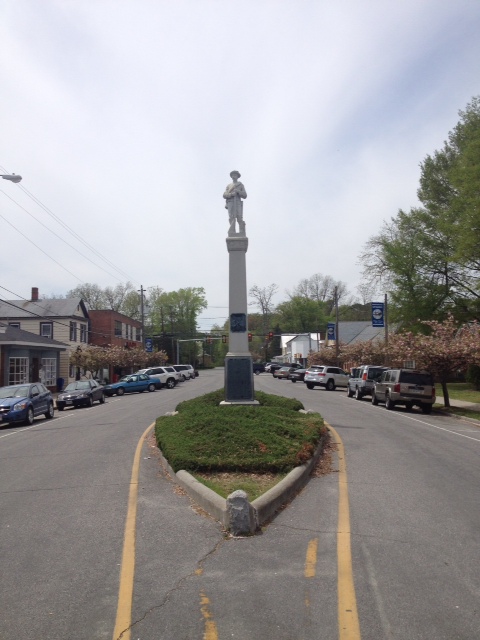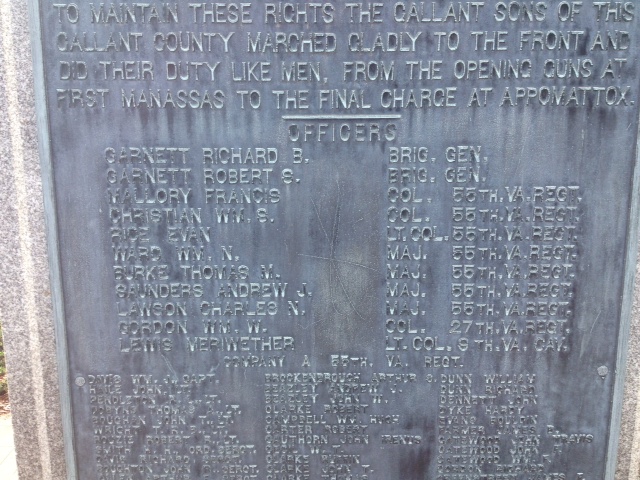Essex County’s Native Sons
Approximately 45 miles southeast of Fredericksburg, Virginia, sits the town of Tappahannock. The name originates from the Algonquian word lappihane (or, it has also been noted, toppehannock). When translated, it means roughly “Town on the rise and fall of water.”
The town is better known today for the singer Chris Brown who mentioned it in one of his songs. Yet the town is steeped in American history, including a cameo in the American Civil War.
The famous English explorer John Smith landed where Tappahannock sits on the Rappahannock River in 1608, but local Native Americans forced him to leave abruptly. Approximately 80 years later, a trading post was established, and the area became known as Hobbs Hole.
Living in the historic Northern Neck, the closest shopping center for my wife and me is in Tappahannock, so we’ve traveled there quite often. This past Sunday, I decided to stop for a longer stay beyond the shopping center, and like a fellow writer here at ECW (Kathleen Logothetis in her post History in Our Backyard!), I was attracted to the statue in the old main section of town.

Tappahannock, Virginia
The statue commemorated Tappahannock and Essex County’s native sons who fought and died during the American Civil War. Besides the sprinkling of men serving in various units, the majority of men from the area served in either the 55th Virginia Infantry or the 9th Virginia Cavalry. Both units saw long and distinguished service attached to the Army of Northern Virginia.
Yet, there were two names on the monument that stuck out to me:

Listed under officers from Essex County was Brigadier Generals Richard B. Garnett and Robert S. Garnett. The two Garnetts were cousins. Both lost their lives in the war.
Robert had the distinction of being the first Confederate general killed in the conflict when he was killed on July 13, 1861 during the skirmish at Corrick’s Ford in what is now West Virginia. After a brief internment in Baltimore, Maryland, his body was moved to Brooklyn, New York, where his body was put to rest beside the grave of his wife.
Richard’s death is immortalized as part of the history of Pickett’s Charge during the Battle of Gettysburg. His remains, according to the inscription on the marker at Hollywood Cemetery in Richmond, Virginia, might be included in the dead that were brought from the fields in Pennsylvania to Virginia. Unfortunately, no one knows for certain.
Thus, a statue I had driven by countless times provided an interesting tidbit of local Civil War history–and raised some interesting questions.
The moral of the story? Next time you drive by something interesting make a stop. The history that marker, monument, and/or historic site could tell you might just raise your eyebrows.

Also General Meade was almost captured by the 9th calvary during the Battle of Myers Hill. The Battle of Myers Hill was a little known battle after the Battle of Spotsylvania. The Battle of Myers Hill was also in Spotsylvania.
A lot of people think the battle of Spotsylvania ended after the fight at the Bloody Angle on May 12-13. However, the armies kept fighting around Spotsylvania until the Federals pulled out on the evening of May 20. Myer’s Hill is one of those fights. We consider everything from the opening engagement on May 8 at Laurel Hill/Spindle Field through the Federal departure on the 20th to be “the battle of Spotsylvania.” (As it happens, as I write this response, I’m sitting on part of the ground that Federal forces crossed on May 13 during the assaults on Myer’s Hill.)
You should stop at John Cummings house he I’d the man who knows everything about Myers Hill. He lives in Stoney Brooke, I’ve been all over Myers Hill I’ve also have found 3 other house sites. I had the county cover the well at Myer’s house it was wide open. Have fun!
You should read The Killing of Crazy Horse by Thomas Powers. Richard Garnett plays a major role. Apparently he had an illegitimate child by a Lakota woman when he was stationed at Fort Laramie before the war. His son went on to feature prominently in the sordid history of the conflicts with the Lakota and in the life of Crazy Horse in particular. A wonderful book.